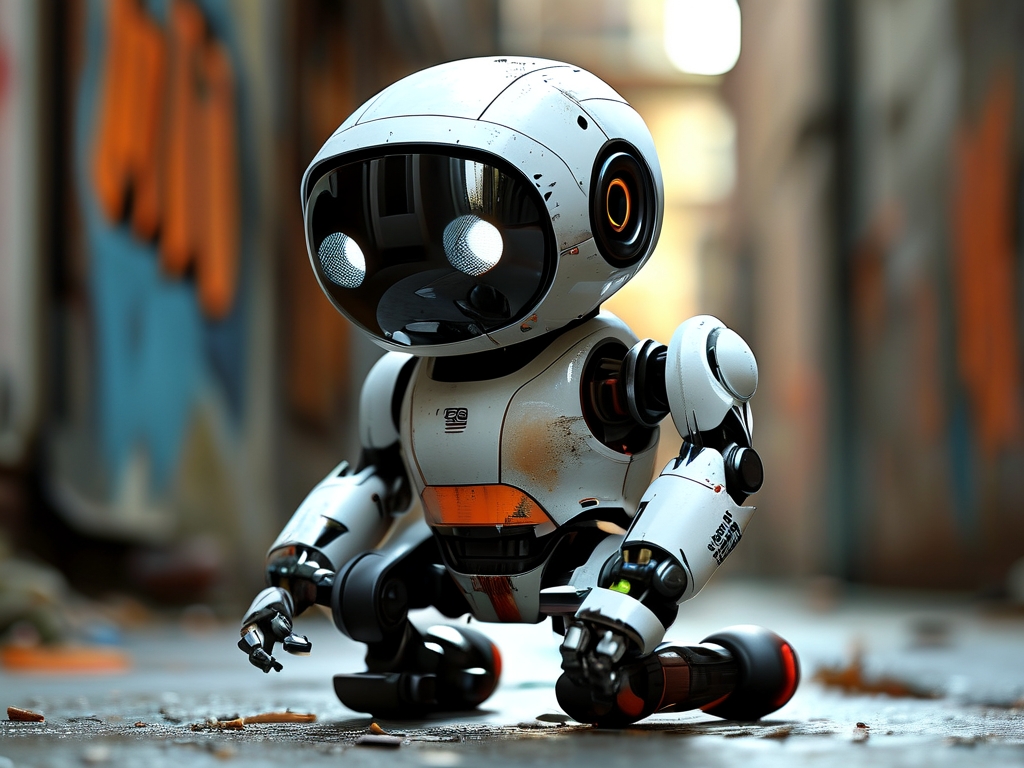The rapid evolution of robotics has transformed industries ranging from manufacturing to healthcare, with 360-degree robots emerging as a cornerstone of modern automation. These multifunctional machines, designed to operate in dynamic environments, require equally advanced maintenance technologies to ensure longevity and efficiency. This article explores the cutting-edge innovations in 360 robot maintenance technology, addressing its technical frameworks, real-world applications, and future implications.

1. The Complexity of 360-Degree Robotics
360-degree robots are engineered to perform tasks with unparalleled spatial flexibility. Unlike traditional robots confined to linear or planar movements, these systems integrate omnidirectional wheels, advanced sensors, and AI-driven navigation. However, their complexity poses unique maintenance challenges:
- Multi-Axis Component Wear: Joints, actuators, and motors experience stress from omnidirectional motion.
- Sensor Calibration Drift: LiDAR, cameras, and infrared sensors require frequent recalibration.
- Software-Hardware Synchronization: Bugs in navigation algorithms or firmware can disrupt physical operations.
To address these issues, predictive maintenance systems have become critical. By leveraging IoT-enabled diagnostics and machine learning, technicians can monitor wear patterns and preemptively replace components before failures occur.
2. Core Technologies in 360 Robot Repair
Modern maintenance strategies for 360 robots rely on three pillars:
a. AI-Powered Diagnostic Tools
Artificial intelligence analyzes real-time data from embedded sensors to detect anomalies. For example, vibration sensors can identify misaligned gears, while thermal cameras flag overheating circuits. Platforms like IBM Maximo and Siemens MindSphere integrate these insights into actionable repair workflows.
b. Modular Component Design
To minimize downtime, manufacturers now adopt modular architectures. Faulty parts—such as a malfunctioning servo motor—can be swapped in minutes without disassembling the entire robot. Companies like Boston Dynamics and ABB Robotics prioritize modularity in their latest models.
c. Augmented Reality (AR) Assistance
AR headsets overlay repair instructions onto technicians’ field of view. For instance, a holographic guide might demonstrate how to recalibrate a robotic arm’s trajectory. This technology reduces human error and accelerates training for complex procedures.
3. Case Studies: Success Stories
- Automotive Manufacturing: At a Tesla Gigafactory, 360 robots equipped with self-diagnostic tools reduced unplanned downtime by 40%. Sensors detected bearing wear in robotic arms weeks before failure, enabling scheduled replacements.
- Healthcare Logistics: In Japan’s hospitals, omnidirectional delivery robots use cloud-based maintenance systems. Technicians remotely update software and troubleshoot navigation errors, ensuring uninterrupted medical supply transport.
4. Challenges and Solutions
Despite advancements, gaps remain:
- Cost of Implementation: Small businesses often struggle with upfront investments in predictive maintenance tools.
- Solution: Subscription-based "Maintenance-as-a-Service" models lower entry barriers.
- Skill Gaps: Traditional technicians lack expertise in AI or AR systems.
- Solution: Partnerships with vocational institutes to develop specialized training programs.
5. The Future of 360 Robot Maintenance
Emerging trends promise to reshape the field:
- Quantum Computing: Accelerating predictive analytics for ultra-precise failure forecasts.
- Self-Healing Materials: Nanotechnology-infused components that autonomously repair minor cracks or electrical faults.
- Blockchain for Maintenance Logs: Immutable records of repairs enhance transparency for industrial compliance.
By 2030, experts predict that 90% of 360 robots will utilize fully autonomous maintenance systems, reducing human intervention to emergency scenarios only.
360 robot maintenance technology is not merely a support function—it is a catalyst for sustainable automation. As industries increasingly rely on agile, omnidirectional robots, investing in advanced repair frameworks becomes essential. From AI diagnostics to AR-guided repairs, these innovations ensure that robots remain resilient, efficient, and adaptable in an ever-evolving technological landscape.

